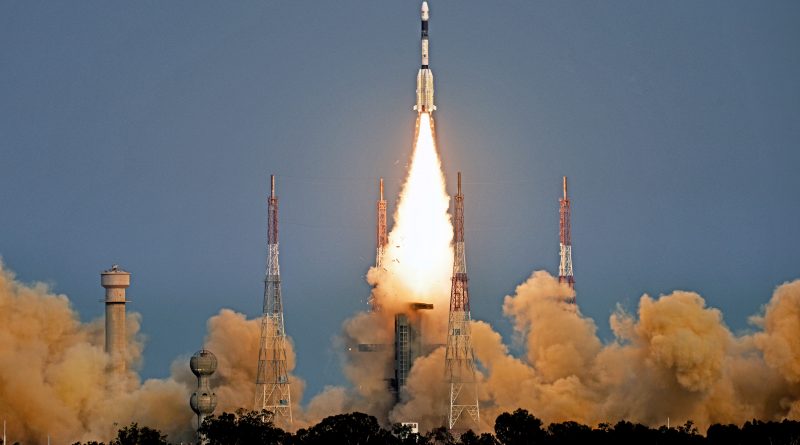GSLV Rocket Soars to 5th Success in a Row with Upgraded Vikas Engine & new Shutdown Technique
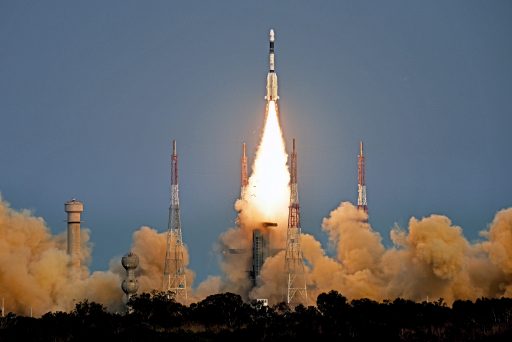
India’s Geosynchronous Satellite Launch Vehicle powered away from the country’s Eastern Shore on Thursday, successfully placing the GSAT-6A advanced S-Band communications satellite into orbit and introducing an upgraded engine as the first of a number of improvements coming up on India’s rockets in the coming years.
Riding on pillars of fire and smoke, GSLV Mk.II lifted off from the Satish Dhawan Space Center at 11:26 UTC under the power of its solid-fueled core stage and four boosters guzzling down a toxic propellant mixture of Hydrazine and Nitrogen Tetroxide. The combined boosters/first stage assembly dropped away after two and a half minutes and the new High Thrust Vikas Engine on the second stage fired for the next 132 seconds before India’s indigenous Cryogenic Upper Stage took over for a long burn of nearly 13 minutes to accelerate the stack to an injection speed of 9.7 Kilometers per second and try out a new shutdown technique.
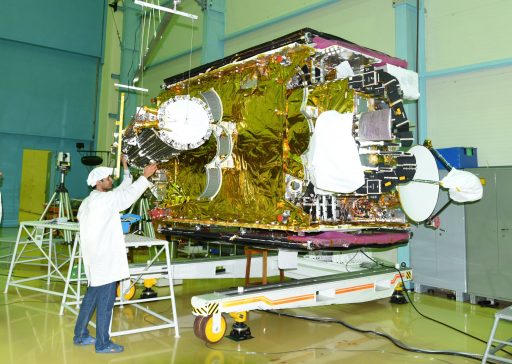
GSAT-6A sailed off on its mission 17 minutes and 45 seconds after liftoff and Indian Space Research Organization officials declared the launch a success after reviewing the orbital parameters achieved by the GSLV rocket. Thursday’s launch was India’s 12th GSLV mission, the sixth of the Mk.II variant with Indian upper stage and it improved GSLV’s reliability record to 5-of-5 since returning from a major design overhaul in 2014.
The success of GSLV F08 was also extremely welcome news to India’s research community since GSLV is set to launch the Chandrayaan-2 lunar research mission in October of this year that attempts to place an instrumented orbiter into a low orbit around the Moon and land a science platform and small rover on the lunar surface. The $125 million Chandrayaan-2 spacecraft is the first flagship mission launching on the GSLV and was contingent on the launcher proving its reliability via successful launches in 2016-18.
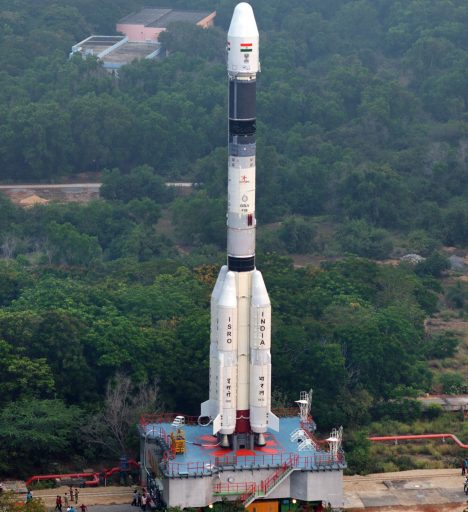
GSLV opened up a string of three orbital space launches planned on Thursday with a Chinese Long March 3B set to lift the next pair of Beidou-3 navigation satellites and a Russian Soyuz 2-1v lofting a classified satellite going by the name EMKA later in the day for the first trifecta of 2018; the last time three orbital missions went up on a single calendar day was on December 23, 2017.
GSLV Mk.II currently represents the intermediate-lift workhorse of the Indian space program, operating alongside the Polar Satellite Launch Vehicle that is called upon for Low Earth Orbit missions and some of the lighter GTO deliveries like India’s navigation satellites while the LVM3 (also known as GSLV Mk.III) handles the heavy-lifting via a GTO capacity in excess of four metric tons.
Gaining an ability of launching sizeable communications satellites toward Geostationary Orbit has been a major objective of the Indian Space Program since the 1990s as the country was dependent on foreign launchers and to this day continues to place its heavier communications craft on Ariane 5 rockets.
GSLV Mk.II was developed over the 1990s with the goal of creating a launcher capable of lifting two-metric-ton-class satellites into Geostationary Transfer Orbit while re-using as many proven components from PSLV as possible.
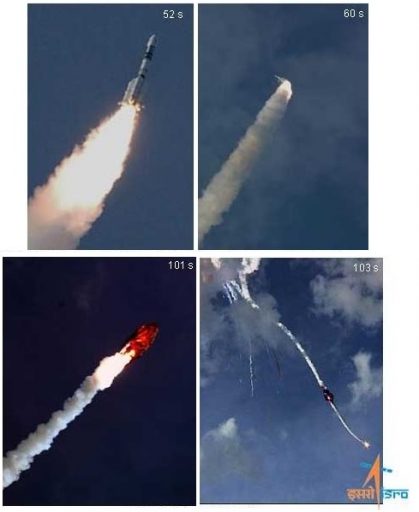
But even that turned out to be anything but trivial as India struggled to master the technology of a full-cryogenic rocket stage which was the major development needed to achieve the desired performance for GTO missions. GSLV reached the launch pad in 2001 – re-using the S139 first stage of PSLV as a solid-fueled core with four Vikas-powered L40 boosters around it, a PSLV-derived second stage atop and a Russian Cryogenic Stage filling the role as interim third stage while India continued development efforts of its home-grown cryogenic stage.
This vehicle, known as GSLV Mk. I, flew five times through 2007 with mixed results – reaching its target orbit on two missions, achieving lower orbits on two flights and encountering one outright failure. GSLV Mk.II – sporting India’s first cryo stage – launched in 2010 but failed to achieve orbit when the Fuel Boost Pump of the cryogenic engine malfunctioned within the first second of its operation. Another failure in 2010 set the GSLV back to a record of only two successes in seven missions – sending the vehicle back to the drawing board for a design overhaul.
GSLV Mk.II returned to flight in 2014 with dozens of modifications focused on reinforcing structural interfaces across the 49-meter tall rocket and increasing the reliability of the Cryogenic Upper Stage (CUS) and its hydrogen-fueled engine. Since its return to flight, GSLV kept up a spotless record, lifting the GSAT-14, 6 and 9 communications satellites, the INSAT-3DR weather satellite and adding to its success streak on Thursday with GSAT-6A.
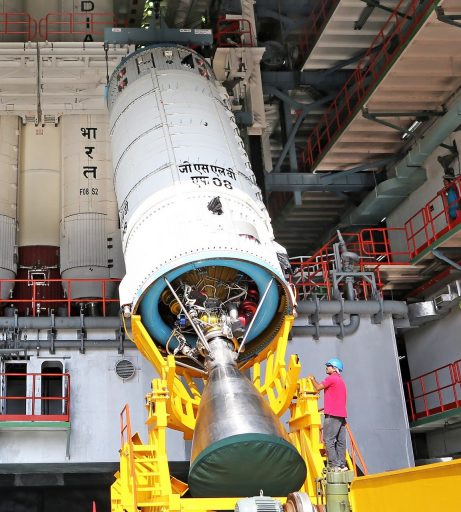
Now a vehicle of proven reliability, GSLV has entered the next phase of its evolution to reach its full potential through a series of incremental design upgrades, aiming to boost its GTO capacity from 2.23 metric tons to up to 3.2 metric tons, according to ISRO officials quoted by Indian news outlets. Improvements will be made in the form of dry mass reduction across the vehicle, upgrading its booster and second stage engines and placing a larger Cryogenic Upper Stage atop the future GSLV-Mk.IIA.
Instead of upgrading to the Mk.IIA in one step, ISRO will implement improved components as available on a flight-by-flight basis starting on Thursday’s F08 mission with the introduction of the High Thrust Vikas Engine on the GS2 second stage, offering a 6% increase in vacuum thrust which translates to +70kg for the rocket’s GTO performance.
Vikas is an adapted version of the European Viking engine developed in the 1970s under a cooperation between the French Space Agency and the Indian Space Research Organization under which ISRO provided manpower for the engine development effort in exchange for licensing rights of the Viking design for its own vehicle fleet. The original Viking design flying on the Ariane 2-4 series was modified by ISRO by qualifying it for the burn time and operational parameters found on the PSLV and GSLV rockets.
>>GSLV Launch Vehicle Overview
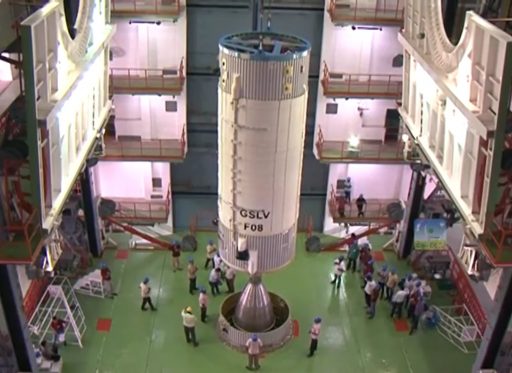
Vikas is a central element of India’s current line of rockets: its vacuum-optimized version serves on the second stages of the PSLV and GSLV Mk.II rockets while the Vikas 2 sea level variant powers the four L40 boosters of the Mk. II and a specialized Vikas-X propels L110 Core Stage of the LVM3. The High Thrust Vikas Engine (HTVE) was realized by increasing the mass flow through the engine by around 15 Kilograms per second to yield an increase in chamber pressure from 58 to 62 bar, translating to an increase in thrust from 799 to 846.8 Kilonewtons for the vacuum version of the engine.
Additionally, HTVE implements an electro-mechanical thrust vector control system replacing the hydraulically-driven system of the heritage engine to bolster its reliability through a simpler design. The sea level HTVE will be introduced on the GSLV Mk. II rocket later this year according to the Liquid Propulsion Systems Center, yielding another gain of 250 Kilograms of payload capacity – presumably referring to the rocket’s GTO capabilities. PSLV will also receive a performance boost when eventually switching to the HTVE on its PS2 stage.
Another upgrade making its debut on Thursday was the introduction of a minimum propellant residuals shutdown on the Cryogenic Upper Stage – essentially allowing the cryogenic engine to fire until sensors within the propellant tanks detect that propellant has reached a minimal level for a safe shutdown upon which the engine will be cut off.
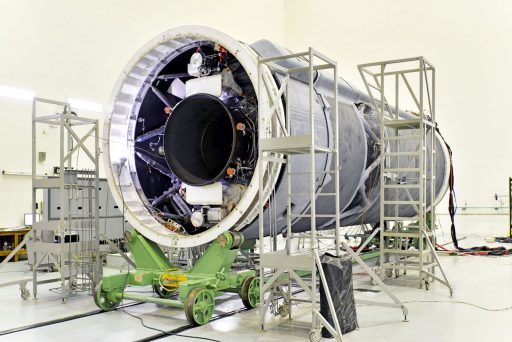
Previously, GSLV relied on a guidance-based shutdown, ending the upper stage burn when attaining the desired injection velocity which typically occurred when there was still propellants left in the tank due to conservative mission simulations. Allowing the CUS to burn to depletion is expected to yield four to five seconds of additional burn time which translates to a performance gain of up to 75 meters per second.
The Cryogenic Upper Stage will also be the focus of another major GSLV upgrade late down the road. It currently flies in its CUS-12 variant with a propellant load of 12,800 Kilograms and will be replaced by the larger CUS-15 in 2018 or 2019 for another significant increase in vehicle performance.
From a performance point of view, Thursday’s F08 mission did not necessarily require an upgraded GSLV launcher – lifting the 2,140-Kilogram GSAT-6A S-Band communications satellite into Geostationary Transfer Orbit. The satellite is joining a sister craft, GSAT-6 launched in 2015, to expand mobile communications capacity for the Indian government and armed forces.
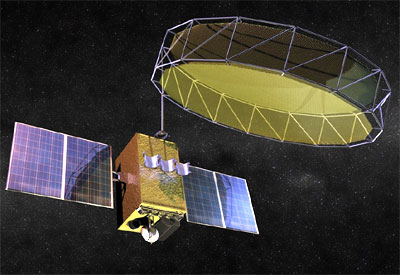
Built on ISRO’s I-2K platform, GSAT-6A hosts an 0.8-meter C-Band antenna carrying communications between the satellite and ground hub stations in India while communications to & from mobile terminals are handled through S-Band with the help of a six-meter unfurlable antenna reflector – the largest of its kind flown by India to date. Five 2.7 MHz S x C-Band transponders are responsible for the terminal-to-hub link while five 9 MHz C x S-Band transponders carry communications from the hub station to deployed terminals.
GSAT-6A is expected to join its nearly identical sister craft at an orbital position of 83 degrees East in Geostationary Orbit, doubling the available S-Band capacity by adding another five downlink spot beams. The satellite also provides continuity of services into the second half of the 2020s via its planned ten-year operational life.
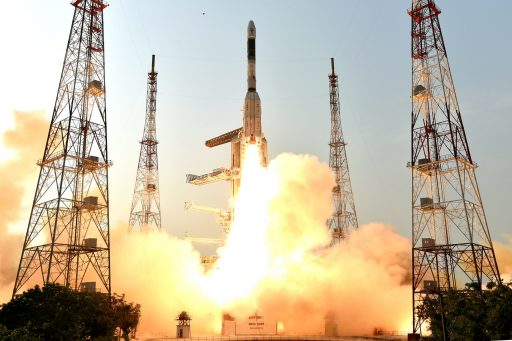
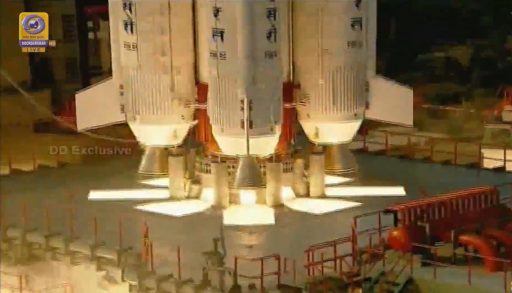
Thursday’s launch was preceded by a 27-hour countdown operation starting Wednesday afternoon with loading the four L40 boosters and GS2 stage with a toxic mix of UH25 Hydrazine fuel and Nitrogen Tetroxide oxidizer – a storable propellant combination that self-ignites once coming into contact. The CUS received its dose of Liquid Hydrogen and Liquid Oxygen later in the countdown and was kept topped up while GSLV went through a final set of reconfigurations before entering its critical terminal countdown at T-12 minutes.
The 415-metric-ton rocket fired up its four boosters at T-4.8 seconds to allow them to reach operational conditions before the solid-fueled core stage ignited to lift the vehicle off the pad at an initial thrust-to-weight ratio near two. Thundering away from Sriharikota with a thrust of 800 metric ton-force, GSLV swung to the south-east – departing along a 106-degree launch azimuth that was modified by half a degree to reach the desired argument of perigee while accounting for the shorter GS2 burn time.
Burning 138 metric tons of packed propellant, GS1 ran out of propellant one minute and 49 seconds after liftoff while the four boosters continued firing their Vikas engines at full throttle – carrying the dead weight of the central core with them for another 42 seconds since the GS1/L40 assembly separates as a whole after booster shutdown. Each consuming 42,800 Kilograms of propellant, the booster helped push GSLV to a speed of 2.4 Kilometers per second with separation from the GS2 stage occurring two minutes and 33 seconds into the mission in hot staging mode.
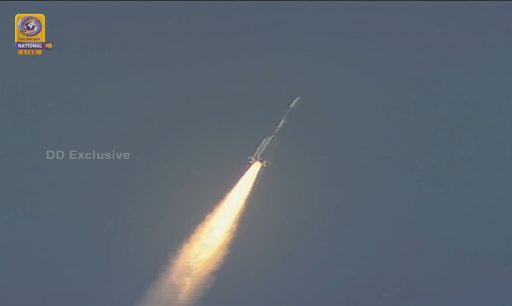
Lighting up the HTVE-Vacuum engine, GS2 was set for a burn of 132.38 seconds, some seven seconds shorter than its predecessor due to the higher flowrate on the engine. GSLV passed 115 Kilometers in altitude at T+3 minutes and 46 seconds and dropped its 3.4-meter diameter fairing halves since aerodynamic forces were no-longer a danger to the delicate satellite structure.
Burning 39,480 Kilograms of hypergolic propellants, the second stage appeared to deliver good performance – staying right on the pre-flight prediction in terms of speed and altitude. Separation was called out four minutes and 47 seconds into the mission followed two seconds later by ignition of the cryo stage, starting out at a speed of 4.9 Kilometers per second and tasked with boosting the stack to target injection velocity of 9,754 meters per second.
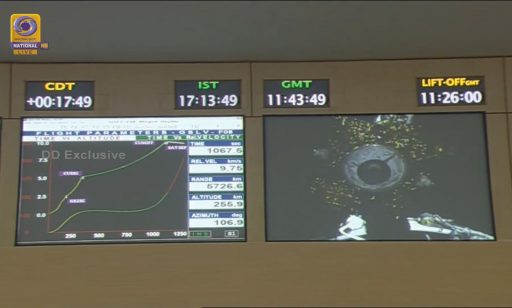
The GSLV F08 mission was targeting an orbit of 170 by 35,975 Kilometers at an inclination of 20.63 degrees – to be achieved after a long CUS burn of 12 minutes and 45 seconds. Shutdown of the upper stage was confirmed right at the T+17.5-minute mark and the rocket’s onboard navigation system indicated it achieved a very accurate orbit. GSLV was lauded once again for its precision by ISRO officials after the successful separation of GSAT-6A was confirmed at the 1,050-second mark into the flight.
Checking off its second orbital launch of the year, ISRO is looking forward to continuing a busy spaceflight year 2018 with ten planned missions. The next launch on the manifest is that of the IRNSS-1I navigation satellite, filling in for IRNSS-1H that was lost in last year’s PSLV failure to take over for the defective IRNSS-1A satellite within India’s Navic constellation. After that will likely be another PSLV followed by a heavy-lift mission of the LVM3 rocket, its second orbital launch.

